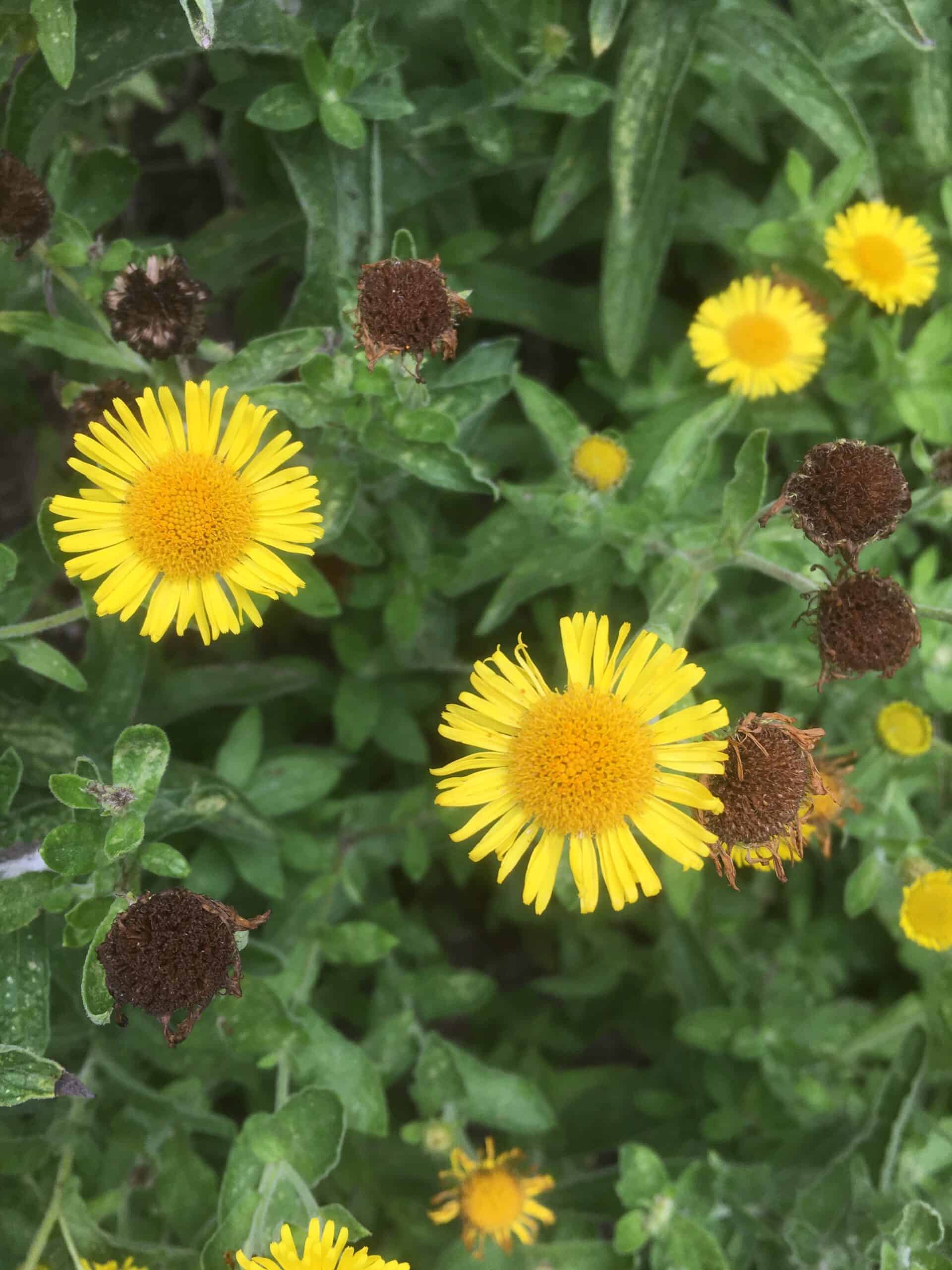Common Fleabane (Pulicaria dysenterica)
Flowers: August to October. Height: 60cm (24in).
The Latin name Pulicaria comes from Pulex meaning flea and the main use of this plant was as an insect repellent. The juice from the plant was used to drive away midges and fleas. Bunches of Common Fleabane were dried and burned as a fumigant or hung in rooms. Its other names include Camels, Harvest flower (due to the time of year it blossoms), Mare’s Fat, Pig-Daisy and Job’s Tears from a tradition that Job used a decoction of this herb to cure his ulcers. Pendanius Dioscorides, a Greek physician from the first century, knew it as Konuza, the ancient Greek word for Inula (the species of plants that Fleabane belongs to).
Medicinal: Infusions of the dried herb were used against dysentery and for unspecified eye ailments.
Magic & Myth: An ancient Babylonian text known as the Utukke Limnûte Tablet stated that Fleabane hung on the lintel of the door would keep the devil at bay.



